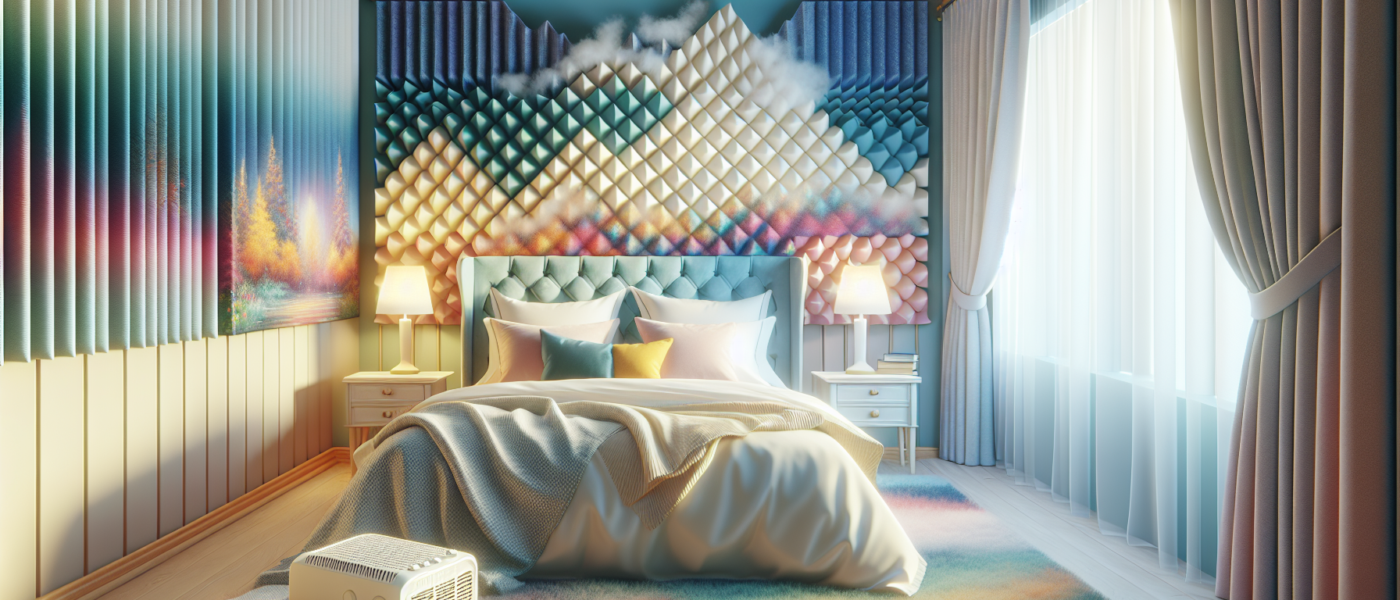Optimizing Bedroom Acoustics for Better Sleep After 50
Key Takeaways
- Optimizing your bedroom acoustics is crucial for better sleep, especially as you age.
- Soundproofing techniques, white noise machines, and strategic placement of furniture can significantly enhance your sleep environment.
- Understanding the impacts of noise on sleep can help in making informed decisions about bedroom acoustics.
- Regular evaluation and updates to your sleep environment can sustain sleep quality over time.
Introduction
Sleep is a fundamental aspect of overall well-being, and its quality becomes even more critical as we age. After the age of 50, various challenges such as medical conditions, hormone changes, and environmental factors can impact sleep. One often overlooked factor is bedroom acoustics. Optimizing the acoustic environment of your bedroom can greatly enhance sleep quality, leading to better health and well-being.
The Importance of Sound and Sleep
Sound plays a significant role in the quality of sleep. Unwanted noise can disrupt sleep patterns, causing frequent awakenings, lighter sleep stages, and overall poor sleep quality. As we age, changes in auditory sensitivity can make us more susceptible to disturbances. Thus, creating a conducive acoustic environment is essential in promoting uninterrupted, restorative sleep.
Understanding Noise Types and Their Impact
Different types of noise can affect sleep in various ways. External noise, such as traffic, neighborhood activity, and nocturnal wildlife, can be particularly disruptive. Internal noise, such as household sounds, snoring, and mechanical systems, can also hinder sleep quality. Each type of noise requires different strategies to mitigate its impact effectively.
Soundproofing Techniques
Windows and Doors
Windows and doors are primary gateways for external noise. Upgrading to double-glazed or triple-glazed windows can significantly reduce noise penetration. Sealing gaps and installing weather stripping around doors can also help to prevent noise from entering the bedroom.
Walls and Floors
Soundproofing walls and floors is another effective strategy. Adding sound-absorbing materials such as acoustic panels, heavy curtains, and carpets can dampen noise. Consider using mass-loaded vinyl or insulation to enhance soundproofing between rooms.
The Role of White Noise
White noise machines can be beneficial in masking disruptive sounds, thereby creating a consistent and soothing auditory environment. These machines produce a steady sound that can help to drown out sudden noises. Alternatives such as fans, air purifiers, and tailored playlists can also serve similar purposes.
Furniture Placement and Bedroom Layout
Strategic Furniture Placement
Furniture placement can influence the acoustics in your bedroom. Placing heavy furniture such as wardrobes and bookshelves against shared walls can help to block noise. Positioning the bed away from windows and noisy walls can also reduce exposure to disturbances.
Soft Furnishings
Incorporating soft furnishings such as plush rugs, cushions, and upholstered headboards can absorb sound, reducing noise levels. These items not only enhance the aesthetic appeal but also contribute to a quieter, more serene sleeping environment.
Technological Aids and Modern Solutions
Smart Home Devices
Smart home devices and apps designed to monitor and improve sleep quality can be valuable. These devices can track noise levels, provide white noise, and even adjust the environment to maintain optimal conditions for sleep.
Noise-Cancelling Headphones and Earplugs
For those who are particularly sensitive to noise, noise-cancelling headphones and high-quality earplugs can be lifesavers. These can be especially useful in environments where soundproofing modifications are not feasible.
Sleep Hygiene Practices
Improving bedroom acoustics should be accompanied by good sleep hygiene practices. Maintaining a consistent sleep schedule, creating a bedtime routine, and keeping the bedroom dark and cool are essential components of quality sleep. Combining these practices with an optimized acoustic environment can yield the best results.
Conclusion
Optimizing bedroom acoustics is a crucial step in enhancing sleep quality, particularly for those over 50. By implementing soundproofing techniques, utilizing white noise, strategically placing furniture, and incorporating modern technological aids, you can create an environment conducive to restful sleep. Regularly evaluating and adapting your sleep environment ensures sustained benefits, contributing to overall health and well-being.

